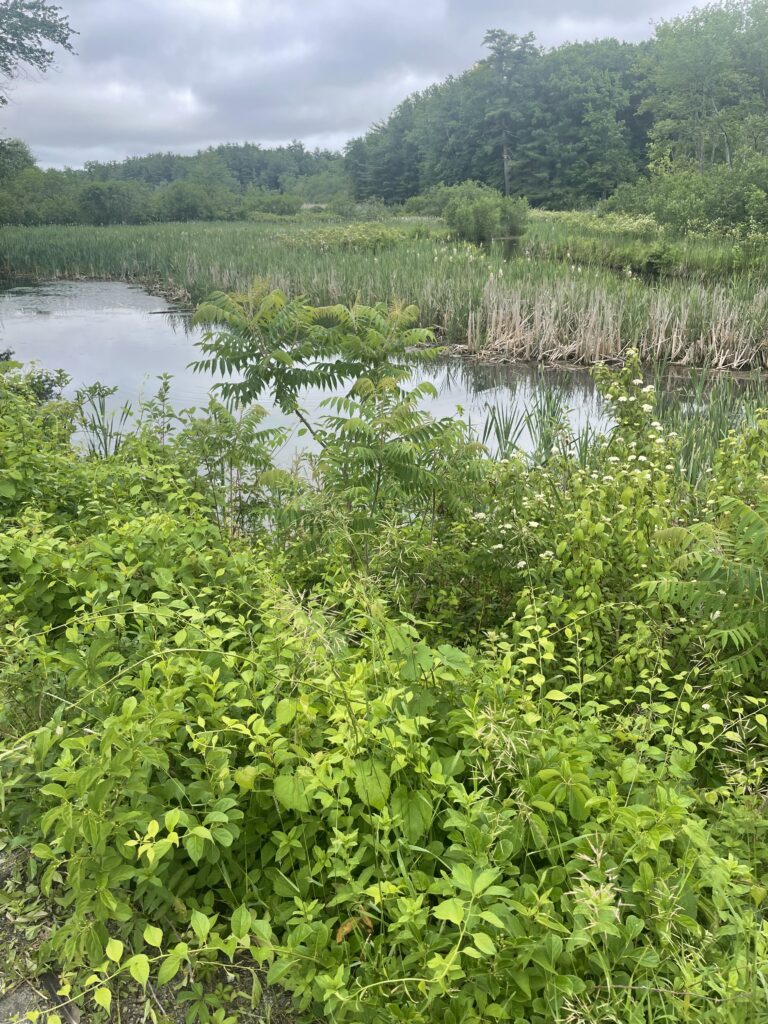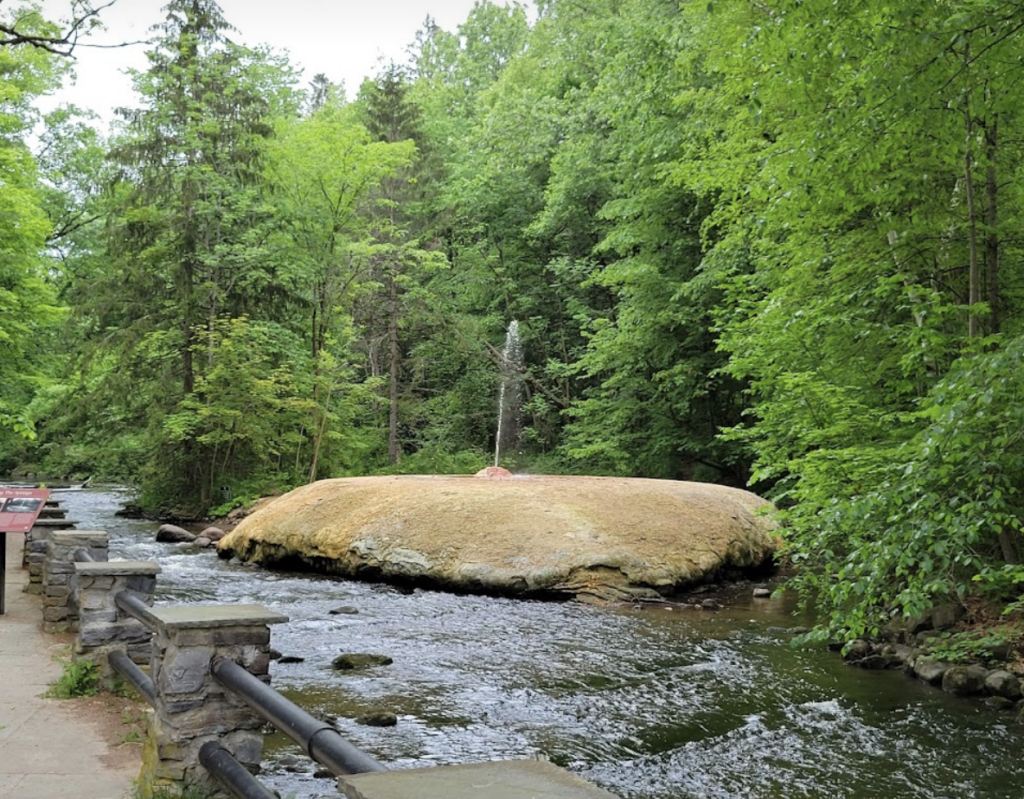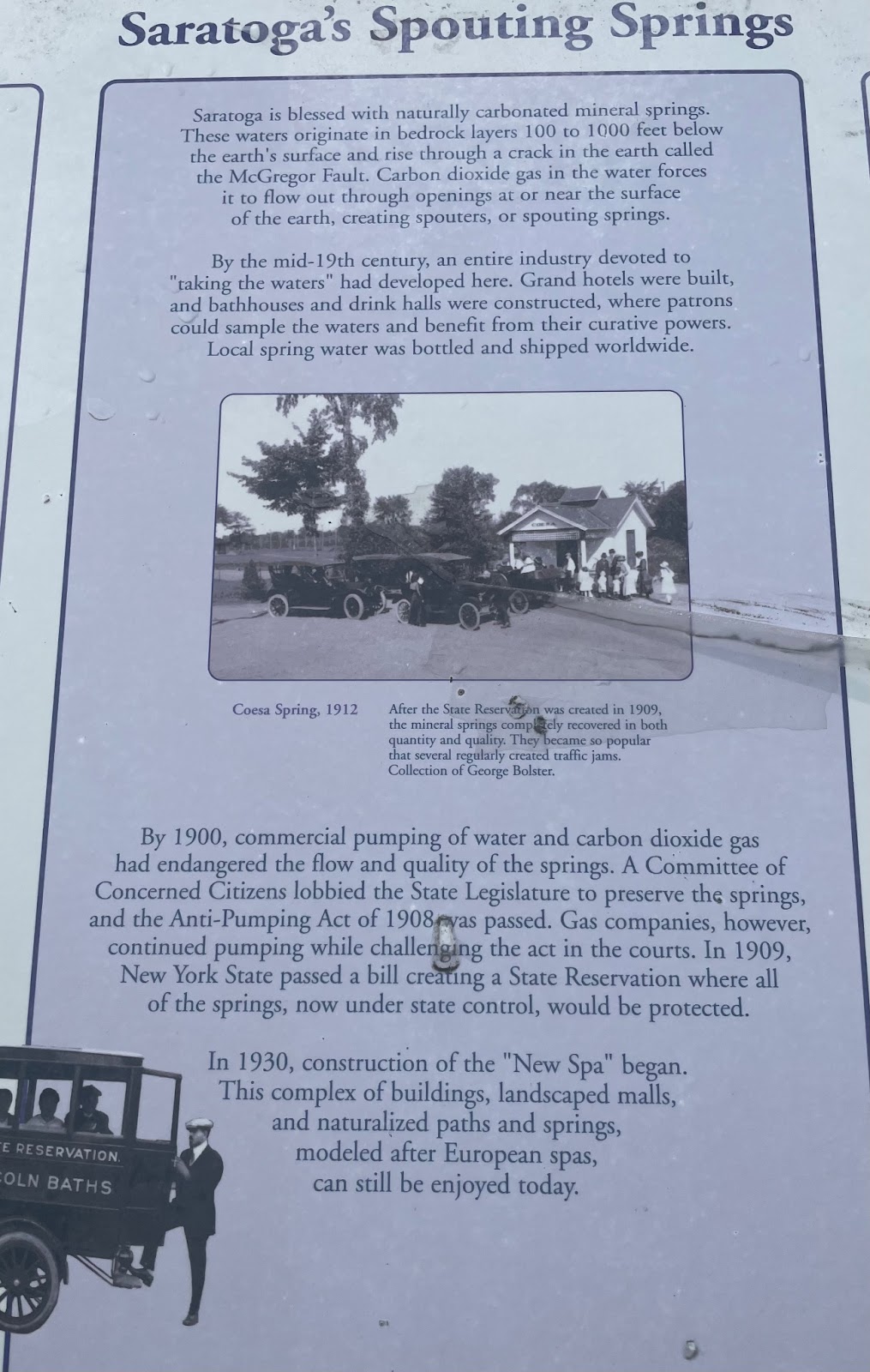The Creation of Saratoga Springs
During the Paleozoic Era, a series of faults or cracks split the underlying bedrock in the area of Saratoga Springs, creating fissures through which water forced its way to the surface. These springs are the only naturally carbonated mineral springs east of the Rocky Mountains. ( a side note– The Cambrian is the first period of the Paleozoic Era and spanned from 539–485 million years ago. It marked a boom in evolution in an event known as the Cambrian explosion in which the largest number of creatures evolved in any single period of the history of the Earth).

Stromatolites at Petrified Sea Gardens are among the oldest fossils ever discovered.
The area known as Serachtague, “place of swift water,” was sacred to the Mohawks and other Native Americans. They believed the naturally carbonated water had been stirred by the God Manitou, endowing it with healing properties.

During the last years of the 19th century, the mineral springs were being depleted at an alarming rate. Gas companies, with no conservation laws or guidelines to deter overuse of the springs, pumped thousands of gallons of spring water just to extract carbonic gas for use in carbonated soft drinks and soda fountains. To conserve and preserve the mineral waters, the New York State Reservation was created in 1911 and the threat of the springs’ extinction was averted. The Lincoln and Roosevelt bathhouses were built during the ‘Reservation’ and currently reside in the Saratoga Spa State Park, home of tonight’s show.

From the bubbling and boiling geysers, to the wide variety of birdsongs in the wetlands, there are distinct and breathtaking vibrations created by the springs that have been lifted from its ancient deep-rooted origins. Naturally formed over thousands of years ago due to upwelling water from underground springs interacting with superheated rocks and gasses, each hot spring brings with it unique geological features as well as captivating visuals and sounds.
THE SOUND OF WATER: The Soothing World of Aquatic Acoustics

No matter where you are or what you’re doing, there is nothing quite like the sound of water. Whether it’s a hot spring, a bubbling stream, trickling raindrops against your window or an ocean wave crashing into the shore – few sounds can bring such moments of peace and calm. But have you ever wondered why we find these water-based sounds so mesmerizing? The explanation lies in the world of aquatic acoustics — from understanding how they are created to uncovering how they impact our wellbeing. So if you’re looking for an enlightening journey that dives deep into the soothing soundscapes of nature, read on.
No matter where you find yourself in the world, you’re likely to hear the soothing sounds of water at some point or another. From the gentle pitter-patter of raindrops to the roaring of ocean waves, these water-based sounds have a way of bringing a sense of peace and calm to our lives. Have you ever stopped to wonder why exactly these sounds have such an impact on our minds and bodies?
At the heart of aquatic acoustics is the way that water molecules move and interact with their surroundings to create sound waves. For instance, when rain falls onto a surface like a roof or pavement, it creates a splashing sound that we perceive as soothing. Even more fascinating is the sound of waves crashing on the shore. Waves are formed by the wind pushing against the surface of the water. As the waves approach the shore, they start to interact with the sea floor and create intricate patterns of sound that we find incredibly calming.
But it’s not just the sounds themselves that are fascinating. Scientists have also explored how listening to water-based sounds can positively impact our mental and physical state. According to studies, the sound of water can help to reduce anxiety and stress levels, improve sleep quality, and even lower blood pressure. This is because water sounds create a sense of relaxation in our brains, activating our parasympathetic nervous systems which are responsible for regulating our body’s “rest and digest” functions.

Another interesting aspect of aquatic acoustics is how they can shape our experiences in different environments. For example, the sound of water in a forest can be very peaceful. It is different from the other sounds of nature like birds and animals. It can create a feeling of peace and balance. On the other hand, the sound of waves crashing in a beach setting can add to the excitement and intensity of the environment. Understanding the impact of aquatic acoustics in different settings is a fascinating area of research that is actively being explored by scientists today.
Conclusion:
The world of aquatic acoustics is full of wonder and intrigue, offering us a real understanding of the natural sounds that surround us. From the way that water molecules create sound waves, to the ways that listening to water-based sounds can benefit our mental and physical health, there is so much that we can learn from exploring this fascinating topic. By taking time to appreciate the sounds of water in our daily lives, we can tap into the effects of aquatic acoustics and improve our overall sense of wellbeing.

SOURCES:
https://www.discoversaratoga.org/saratoga-springs-visitor-center/history/
https://relaxidentity.medium.com/why-you-should-listen-to-the-sound-of-flowing-water-1873aab84d1e
